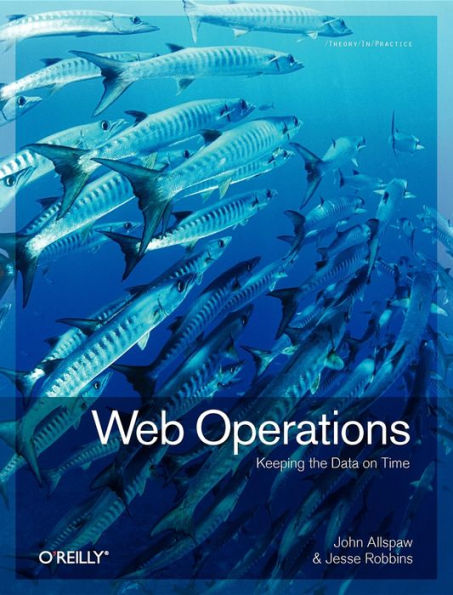A web application involves many specialists, but it takes people in web ops to ensure that everything works together throughout an application's lifetime. It's the expertise you need when your start-up gets an unexpected spike in web traffic, or when a new feature causes your mature application to fail. In this collection of essays and interviews, web veterans such as Theo Schlossnagle, Baron Schwartz, and Alistair Croll offer insights into this evolving field. You'll learn stories from the trenches--from builders of some of the biggest sites on the Web--on what's necessary to help a site thrive.
- Learn the skills needed in web operations, and why they're gained through experience rather than schooling
- Understand why it's important to gather metrics from both your application and infrastructure
- Consider common approaches to database architectures and the pitfalls that come with increasing scale
- Learn how to handle the human side of outages and degradations
- Find out how one company avoided disaster after a huge traffic deluge
- Discover what went wrong after a problem occurs, and how to prevent it from happening again
Contributors include:
John Allspaw
Heather Champ
Michael Christian
Richard Cook
Alistair Croll
Patrick Debois
Eric Florenzano
Paul Hammond
Justin Huff
Adam Jacob
Jacob Loomis
Matt Massie
Brian Moon
Anoop Nagwani
Sean Power
Eric Ries
Theo Schlossnagle
Baron Schwartz
Andrew Shafer
A web application involves many specialists, but it takes people in web ops to ensure that everything works together throughout an application's lifetime. It's the expertise you need when your start-up gets an unexpected spike in web traffic, or when a new feature causes your mature application to fail. In this collection of essays and interviews, web veterans such as Theo Schlossnagle, Baron Schwartz, and Alistair Croll offer insights into this evolving field. You'll learn stories from the trenches--from builders of some of the biggest sites on the Web--on what's necessary to help a site thrive.
- Learn the skills needed in web operations, and why they're gained through experience rather than schooling
- Understand why it's important to gather metrics from both your application and infrastructure
- Consider common approaches to database architectures and the pitfalls that come with increasing scale
- Learn how to handle the human side of outages and degradations
- Find out how one company avoided disaster after a huge traffic deluge
- Discover what went wrong after a problem occurs, and how to prevent it from happening again
Contributors include:
John Allspaw
Heather Champ
Michael Christian
Richard Cook
Alistair Croll
Patrick Debois
Eric Florenzano
Paul Hammond
Justin Huff
Adam Jacob
Jacob Loomis
Matt Massie
Brian Moon
Anoop Nagwani
Sean Power
Eric Ries
Theo Schlossnagle
Baron Schwartz
Andrew Shafer

Web Operations: Keeping the Data On Time
338
Web Operations: Keeping the Data On Time
338Related collections and offers

Product Details
| ISBN-13: | 9781449394158 |
|---|---|
| Publisher: | O'Reilly Media, Incorporated |
| Publication date: | 06/21/2010 |
| Sold by: | Barnes & Noble |
| Format: | eBook |
| Pages: | 338 |
| File size: | 3 MB |
